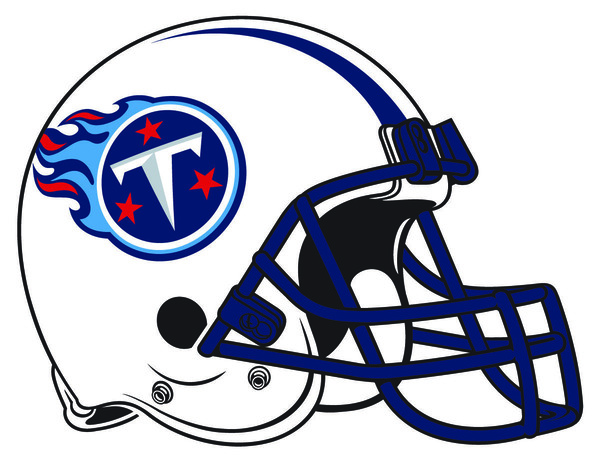The Tennessee Titans have a long history. Businessman Bud Adams attempted to have an NFL expansion team in Houston. After coming up short, the Houston Oilers, were established in 1960. They were one of the eight original members of the American Football League (AFL). The team had early success, coached first by Lou Rymkus, and then Wally Lemm. The team won championships the first two years of the league’s existence.
Key players on these teams included quarterback George Blanda, running back Billy Canon, and wide receiver Charley Hennigan. Hennigan caught 101 passes in 1964, the first in the franchise’s history. Blanda was elected to the Hall of Fame in 1981.
While in the AFL, the Oilers played their home games initially in Jeppesen Stadium, followed by Rice Stadium, and then the Astrodome starting in 1968.
Oilers join the NFL
The Oilers joined the National Football League (NFL) as part of the AFL-NFL merger in 1970. The Oilers selected running back Earl Campbell with the first overall pick in the 1978 draft. Campbell helped lead the team to three consecutive playoff appearances, winning the Offensive Player of the Year Award in each of those three seasons. Warren Moon, a quarterback from the Canadian Football League (CFL) joined the team in Campbell’s last year, 1984.

The team would go on have several more years of playoff success with Moon at the helm. The Oilers made the playoffs in 1987, 1988, 1989, 1990, 1991, 1992 and 1993. Moon threw for 4,689 yards in 1990, the first quarterback in the team’s history to throw for over 4,000 yards in a season.
Dischenchantment in Houston
Adams grew disenchanted with the Astrodome, as it did not have enough luxury boxes and amenities to his liking. Adams attempted to negotiate with the city of Houston for a new stadium. Failing to get any promises from the city, Adams moved the team in 1997 to Tennessee and Nashville for the 1998 season. The move was prompted by promises of a new stadium. While waiting for construction of the new facility, the team played its home games at Liberty Bowl Memorial Stadium in Memphis the first season.
Although based in Nashville, the team travelled to Memphis for the games. In the first seven games of the season, there were crowds of less than 27,000, and two games had attendance of less than 18,000 Things improved the following year as the team relocated to Nashville and played at Vanderbilt Stadium. The team was renamed the Titans, a mythological reference to the city’s self-reference as being the “Athens of the South.”
Tennessee Titans get to the Super Bowl
1999 was also the year that the Titan moved into a new stadium. Adelphia Coliseum, now known as Nissan Stadium is still home to the Titan today. The year is also memorable for Titans fans as they reached the Super Bowl. Led by quarterback Steve McNair and running back Eddie George, the Titans lost to the St. Louis Rams, 23-16 in Super Bowl XXXIV in a game that came down to the last play of the game, as the Rams made a goal-line defensive stop to preserve the victory.
The Titans got to the Super Bowl by defeating the Buffalo Bills in a wild-card game. Tennessee emerged victorious when they pulled off an unlikely 75-yard kickoff return with three seconds to go. Kevin Dyson scored on what has become known as the “Music City Miracle,” a play that featured multiple handoffs and laterals to help Dyson score the game winning touchdown.
The Titans currently play in the American Football Conference (AFC) South Division along with the Houston Texans, Indianapolis Colts and Jacksonville Jaguars.
The Tennessee Titans are the only NFL team to have had two 2,000-yard rushers. Chris Johnson rushed for 2,006 in 2009 and Derrick Henry rushed for 2,000 yards in 2021. To date, there have been a total of eight players rushing for 2,000 or more yards in NFL history.
Barry Schustermann
Follow me on X @Barry Schust
Follow me on Facebook @Barry Schustermann

